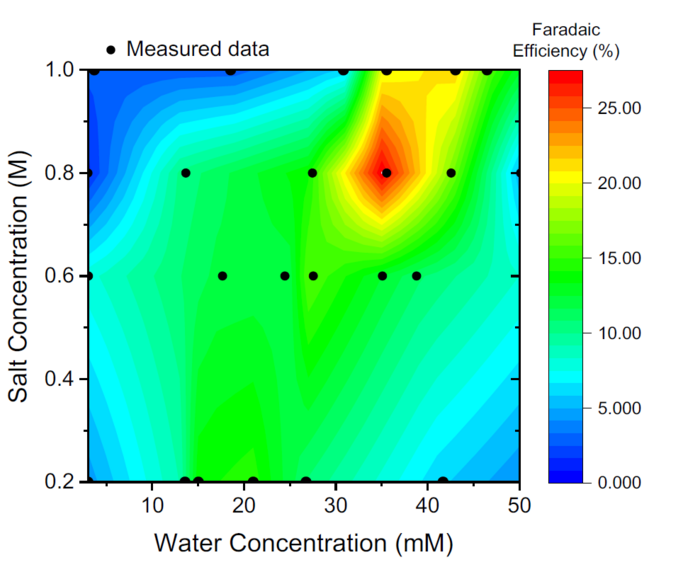Osaka, Japan – The Haber–Bosch reaction helps feed the world by converting nitrogen into ammonia, a fertilizer precursor. However, its carbon footprint is huge: this one reaction is the source of nearly 2% of global carbon emissions. Now, in a study recently published in ACS Energy Letters, researchers from Osaka University have helped re-imagine this reaction to improve the sustainability of the chemical industry.

Credit: 2023 Katayama et al., Water Increases the Faradaic Selectivity of Li-Mediated Nitrogen Reduction. ACS Energy Letters
Osaka, Japan – The Haber–Bosch reaction helps feed the world by converting nitrogen into ammonia, a fertilizer precursor. However, its carbon footprint is huge: this one reaction is the source of nearly 2% of global carbon emissions. Now, in a study recently published in ACS Energy Letters, researchers from Osaka University have helped re-imagine this reaction to improve the sustainability of the chemical industry.
Replacing the Haber–Bosch reaction with a more sustainable alternative has been an active area of research for many years. These efforts have led to a globally well-established electrochemical reaction for ammonia synthesis. However, efforts at optimizing this reaction are hindered by insufficient understanding of how it proceeds. A general consensus is the need to minimize the water concentration in the reaction as much as possible. Revisiting this consensus—with the goal of providing chemical reaction details that will be useful for optimizing ammonia production—is the problem that the researchers sought to address.
“There are various creative ways to improve the Faradaic efficiency by increasing the nitrogen partial pressure or solubility,” explains Yu Katayama. “We have complemented these studies by showing that trace water can facilitate the reaction progress.”
The researchers report a trace water concentration (ca. 36 millimolar) and a lithium perchlorate concentration (0.8 molar) that results in a Faradaic efficiency of ca. 28% at atmospheric pressure. This selectivity is the highest reported to date at ambient pressure, without using a gas diffusion electrode.
“X-ray photoelectron spectroscopy experiments indicate that the selectivity is attributable in part to the trace water facilitating lithium oxide incorporation into the solid electrolyte interphase,” says Katayama. “Higher water concentrations might facilitate hydrogen evolution, an undesired side reaction.” “This surprising result can only be found with help and discussion with researchers from ICL. I believe the outcome emphasizes the importance of research collaboration.”
This work succeeded in improving the Faradaic efficiency of nitrogen reduction into ammonia at ambient pressure by straightforward means and uncovering the chemistry that leads to this result. Fine-tuning chemical process parameters dramatically improved the output of this reaction. Thus, there are many previously discounted electrochemical systems that might be worthwhile revisiting for future research efforts that investigate their detailed mechanisms. Researchers are now closer to optimizing fertilizer precursor synthesis in industry and minimizing the carbon footprint of its production.
###
The article, “Water Increases the Faradaic Selectivity of Li-Mediated Nitrogen Reduction,” was published in ACS Energy Letters at DOI: 10.1021/acsenergylett.2c02792
Journal
ACS Energy Letters
DOI
10.1021/acsenergylett.2c02792
Method of Research
Experimental study
Subject of Research
Not applicable
Article Title
Water increases the Faradaic selectivity of Li-mediated nitrogen reduction
Article Publication Date
31-Jan-2023




